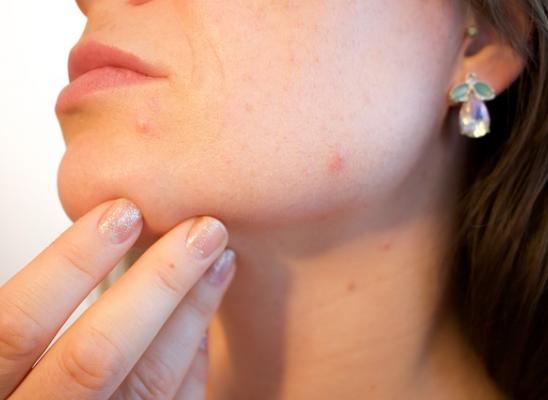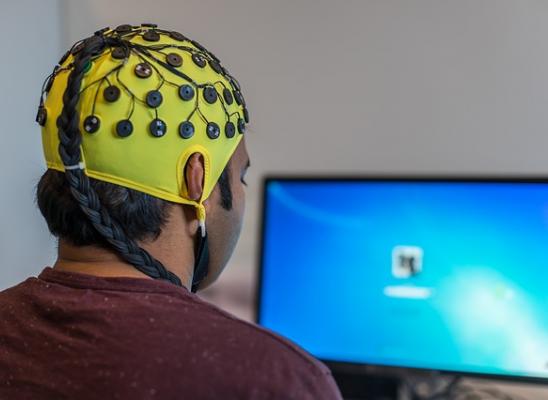Cognitive Behavioural Therapy (CBT) for Dermatillomania
Online test
Find out the severity of your symptoms with this free online test
It is widely agreed that Cognitive Behavioural Therapy (CBT) is the most effective form of intervention for body-focussed repetitive behaviors (BFRBs) such as dermatillomania (now known as excoriation disorder). Cognitive Behavioral Therapy focuses on making the patient aware of what they are doing and why they are doing it, as well as providing effective means to find positive alternatives to the harmful actions.
What is CBT?
CBT, or Cognitive Behaviour Therapy, is a talking therapy that has been proved to help treat a wide range of emotional and physical health conditions in adults, young people and children. The main difference between CBT and other talk therapies is that the focus is more on how our thoughts and actions influence each other, and looking for strategies to alter that relationship so that the outcomes for both are positive; as opposed to reflecting on issues of the past. CBT is all about the here and now and developing skills and strategies to effectively respond to challenges we are currently facing. One of the reasons CBT is so effective is that it is applicable in a wide variety of settings, from individual face-to-face sessions, telephonic sessions, group therapy, self-help books and programs, and even text-based and online therapy programs. The practical and patient-driven nature of CBT allows it to be tailored to the specific needs of the patient or setting.
Building a therapeutic alliance
When you access the support of a cognitive behavior therapist, there are four important stages you will be guided through. The first stage is the Assessment Stage where you and your therapist will get to know each other. An important feature of the CBT therapeutic relationship is that the role of the therapist is to work with you, introducing you to the various strategies and skills, guiding your reflection and awareness of your thought processes, and provide support and encouragement when you become demotivated. In this first stage you and your therapist will establish your goals and build a positive sense of partnership. Another important feature of CBT is that it is information-giving. A large part of the first stage of CBT is getting to know and understand your condition. Your therapist may provide you with resources and information about skin picking disorder, which you can discuss in therapy and talk about how the disorder applies to your own life. For this reason it is important that even the most experienced CBT therapist become knowledgable about skin picking disorder in order to effectively serve you as a patient.

Understanding your thoughts
The second stage of CBT is the Cognitive Stage. In this stage you will learn to understand and control your own thought processes. You will learn to gain more awareness of the subconcious thoughts you experience prior to, and while engaging in picking behaviors. Together you and your therapist will examine your thoughts and whether there is evidence for the way your think about things. Although this is the second stage of CBT, this work continues throughout your CBT treatment.
Working with behavior
In the behavioural part of CBT, you learn to understand how your thoughts and your behaviour influence each other. Together, you and your therapist will explore how your thoughts impact on your choices and behaviors and vice versa. You will problem solve and experiment with new patterns of thought and behaviour that help you to manage your skin picking behaviors. However this only addresses the underlying causes of skin picking and not the actual urge to pick, as is characteristic of the disorder. One of the techniques used in CBT for skin picking and other BFRBs is Habit Reversal Training (HRT). HRT involves learning about your urges, learning not to act on your urges by carrying out an alternate activity, and creating barriers to picking such as the wearing of gloves.
Skills for life
Toward the end of your therapy program you will have practiced your new found skills and strategies in real life situations and reflected and evaluated the effectiveness with your therapist. The final stage of CBT is the learning stage where you will begin to assimilate the CBT principles into your life and learn how to apply them to different situations so that you can become autonomous in the management of your condition.Your therapist will be able to advise you on how to continue using CBT techniques in your daily life after your treatment ends.
An integrated approach
Although there are defined stages in CBT, these are not clear cut. One stage does not begin when the one before ends. Instead the stages overlap and continue to build on each other as you progress through therapy. The success of CBT is grounded in practical application of skills and requires practice, practice, practice. When you engage with a CBT program you should expect to work both in and outside of your sessions. You will be given homework tasks and assignments which will form a crucial part in the effectiveness of your therapy.
CBT is not a quick fix and while it has been proven to be effective in treating skin picking disorder, it is not a magic fix all. It is always a good idea to be open to other therapies too, and often times it is more effective when a combination of treatment methods are employed, with CBT as the guiding framework. Perhaps as we learn more about skin picking disorder and more health professionals become aware of the condition, the application of CBT will develop too.
Online test
Find out the severity of your symptoms with this free online test
Start your journey with SkinPick
Take control of your life and find freedom from skin picking through professional therapy and evidence-based behavioral techniques.
Start Now



